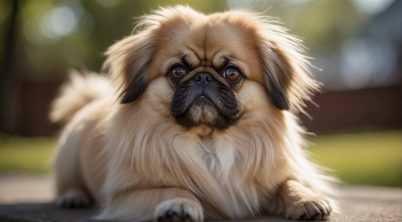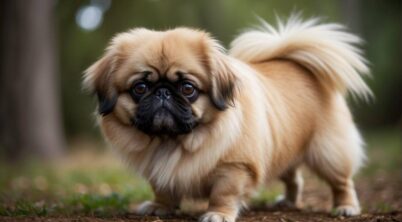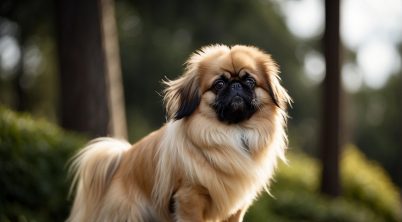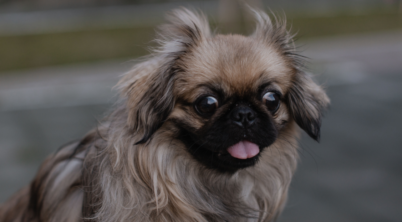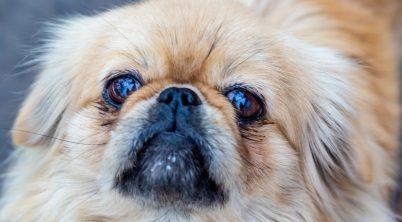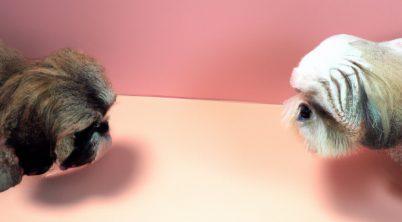The Pekingese breed, with roots deeply embedded in the rich tapestry of Chinese history, has long enchanted dog enthusiasts around the world. These small dogs, often associated with the lap of Chinese royalty, exhibit a character far grander than their diminutive stature. The breed, originally from Beijing, has been favored by imperial dynasties for centuries, prized for its unique lion-like appearance and loyal companionship.
In the realm of canine extremes, the search for the biggest Pekingese on record uncovers a narrative that is as much about individual dogs as it is about the breed’s characteristics. Pekingese are generally compact, but they can vary in size. While the breed standard does not typically lend itself to large dogs, occasional outliers can exceed expectations. Documenting the largest Pekingese not only satisfies curiosity but also serves as a testament to the breed’s genetic diversity.
Caring for these dogs requires a nuanced understanding of both their physical needs and their dignified temperament. Whether or not they hold records, Pekingese dogs possess a regal bearing and a profound history that demands respect. Owners and enthusiasts cherish them for their friendly nature and adaptability, which make them lovable companions despite their size.
Table of Contents
Biggest Pekingese on Record
The world has seen some remarkably large Pekingese dogs, with records demonstrating their substantial size and weight relative to the standard expectations of the breed.
Size of the Biggest Pekingese on Record
The biggest Pekingese on record was notable for its size, which surpassed the typical dimensions observed in this breed. Pekingese dogs standardly have a height at the withers ranging from 6 to 9 inches. However, information about the precise size of the largest Pekingese is not available in the given search results, and it would be necessary to review breeder records or canine historical data to present exact measurements.
Weight of the Biggest Pekingese on Record
Regarding weight, the Pekingese breed usually ranges between 7 to 14 pounds. The heaviest Pekingese on record would exceed this range, though specific weight is not detailed in the available data. Reliable details concerning the weight of record-holding Pekingese would require access to verified records from recognized authorities.
Physical Characteristics
This section examines the key physical traits of the largest Pekingese on record, focusing on its size and weight, the variety of coat colors, and its distinctive features. Each attribute plays a role in distinguishing this breed, especially the larger specimens.
Size and Weight
The Pekingese is a compact and muscular dog, with the largest one recorded maintaining the standard proportions but on a bigger scale. On average, Pekingese stand 6-8 inches tall at the shoulder. The heaviest Pekingese on record would still fall within the breed’s normal weight range which is typically up to 14 pounds. Dogs exceeding this weight may not qualify in show standards, indicating that even the largest Pekingese adhere to breed specifications.
Coat and Colors
The Pekingese boasts a double coat that can come in an array of colors, including but not limited to red, tan, gold, black, white, sable, blue, fawn, and cream. The variety of colors, alongside its ample coat, enhances the breed’s dignified appearance. The coat requires regular grooming to maintain its striking appeal. The length and density of the fur contribute to the ‘lion-like’ mane, which is particularly pronounced in larger specimens.
Distinctive Features
Distinctive to the Pekingese breed are its large eyes and short snout which comprise their flat face. The breed exhibits a unique facial structure that, along with its hefty mane, gives it a regal presence. Their eyes are dark and expressive, offering a contrast to their lush coats. Despite the larger size of the biggest Pekingese on record, these distinctive features remain consistent with breed standards.
Training and Socialization
Training a Pekingese, particularly the largest specimens, requires an understanding of their intelligent yet dignified nature. Since they can be alert watchdogs, early training and socialization are vital to help them become well-rounded pets.
Early Training Tips
Training should start as soon as a Pekingese pup is brought home. The intelligent nature of these dogs demands consistency and patience, with a focus on positive reinforcement techniques.
- Start with simple commands such as sit, stay, and come.
- Use treats and praises to reward desired behaviors, fostering a positive association with training.
- Keep sessions short to maintain their attention – 5 to 10 minutes is sufficient.
- Practice commands in various settings to ensure the dog responds reliably in any situation.
Encouraging Social Behavior
Socialization is a crucial part of a Pekingese’s development, helping to mitigate their natural tendency to be wary around strangers and in new environments.
- Introduce the Pekingese to different people, pets, and situations starting from a young age.
- Carry out introductions in controlled environments to prevent overwhelming them.
- Always monitor interactions and step in if the dog shows signs of distress.
By incorporating these strategies, a Pekingese can grow to be a well-adapted companion, capable of handling various social contexts with grace.
Pekingese Breed Records
The Pekingese dog breed has a fascinating record history, populated with unique individuals and breathtaking accomplishments. These records give insights into the breed’s size, abilities, and historical significance, allowing us to appreciate the Pekingese beyond its charming looks.
Notable Dogs in History
One historically significant Pekingese is Looty, who comes with a story intertwined with British royalty and the aftermath of the Second Opium War. Looty was among the five Pekingese dogs taken from the Old Summer Palace (Yuanmingyuan) in Beijing and later presented to Queen Victoria during the 19th century, an event that solidified the breed’s status as symbols of royalty and nobility.
Record-Holding Pekingese
When discussing record-holding Pekingese, one notable record from Guinness World Records would be the case of a dog named Puggy, holding the record for the longest tongue on a dog, which measured 4.5 inches in length. While this does not pertain to size directly, it exemplifies the varied and distinctive characteristics that can emerge within the breed. Record specifics such as the largest known Pekingese are not readily available, but with the breed’s robust history of recognition and accomplishments, they continue to intrigue enthusiasts and dog lovers alike.
Comparing the Pekingese
The Pekingese, renowned for its distinct appearance and dignified character, differs considerably from other dog breeds, especially in terms of size, history, and temperament.
With Other Breeds
When comparing the Pekingese to other breeds, one should consider its size and stature. The Pekingese typically stands at 6 to 9 inches tall and weighs 7 to 14 pounds, significantly smaller when set against larger breeds such as the Great Dane or the Irish Wolfhound. In contrast to the Greyhound, known for its speed and lean frame, the Pekingese is more compact, with a characteristic rolling gait reflective of its leisurely attitude.
The Pekingese’s long, flowing coat also stands in stark contrast to that of the short-coated Australian Cattle Dog or the tight, curly fur of a Poodle. With regards to companionship, the breed is treasured as a companion dog, much like the Golden Retriever, but they do not share the Golden’s athletic inclination or size.
| Breed | Height (inches) | Weight (pounds) | Notable Traits |
|---|---|---|---|
| Pekingese | 6 – 9 | 7 – 14 | Companion dog, rolling gait |
| Great Dane | 28 – 34 | 110 – 175 | Large size, gentle giant |
| Irish Wolfhound | 30 – 35 | 105 – 180 | Tallest of breeds, muscular |
| Poodle | >10 (Toy) | Variable | Intelligent, hypoallergenic |
| Australian Cattle Dog | 17 – 20 | 30 – 50 | Sturdy build, energetic |
| Golden Retriever | 21 – 24 | 55 – 75 | Friendly, loves retrieving |
| Greyhound | 25 – 30 | 60 – 70 | Fastest breed, slim stature |
Role in a Multi-Breed Household
In a multi-breed household, the Pekingese might assume a more laid-back role. They typically get along with other breeds but may choose to remain a bit aloof, particularly with larger breeds such as the Tibetan Mastiff or even active, more exuberant dogs like the Beagle. Due to its smaller size, a household with much larger breeds will need to ensure that the Pekingese isn’t overwhelmed during play, considering a toy such as a tennis ball might be manageable for a Pekingese whereas larger breeds might prefer more robust playthings.


